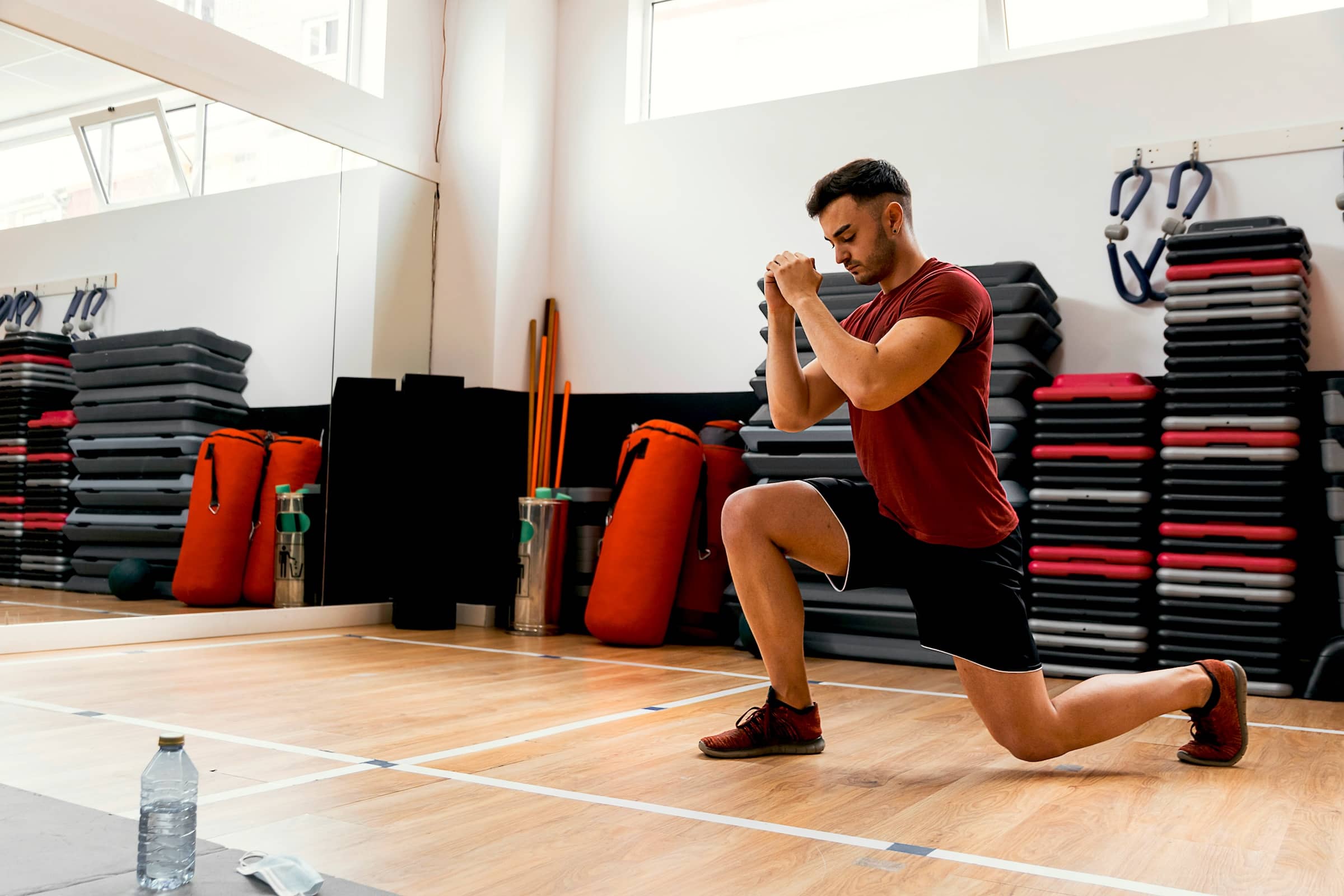There are exercises for stiff joints that don’t just ease the discomfort but can also help prevent it from derailing your daily life or workout routine.
Stiffness can creep in quietly, whether it’s the aftermath of a chilly run, an old injury acting up, or simply the passage of time. But the good news? You don’t have to wave the white flag.
According to Mark Harris, Fitness Expert at Mirafit, the first step to moving better is understanding what’s causing the stiffness in the first place.
“Over time, our joints can become stiff for many different reasons, including conditions such as arthritis, previous injuries or age. People need to understand the potential reasons behind their stiff joints to avoid exacerbating the issue.”
Why Your Joints Feel Like They’re on Strike
There isn’t a single villain here. Think of stiff joints as the result of a gang-up involving worn cartilage, repetitive strain, and seasonal sabotage.
“Overall, age plays a huge part in stiff joints. As we age, the cartilage found in our joints can dry out, this lack of fluid leads to stiffness, resulting in the common injury and impacting fitness regimes.”
And if you’re someone who powers through workouts without rest days, you might be part of the problem:
“Additionally, overusing a specific muscle or body part could result in an injury that leads to stiffness. This occurs because overuse can damage joint tissue, leading to inflammation and bouts of pain.
It highlights the importance of recovery and why people should limit workouts until their body is completely ready.”
Then there’s the cold factor. Low temperatures slow circulation and reduce joint fluid—two perfect ingredients for a stiff, sluggish start.
“Also, low temperatures is another huge factor that can lead to stiff joints. When temperatures fall, blood circulation is reduced, leading to less joint fluid.
To anyone working out in the cold, such as runners, be sure to wrap up accordingly to avoid restricting movement.”
So now that you know what’s behind the stiffness, let’s look at the smart, joint-friendly exercises that’ll get you moving again—without overdoing it.
1. Low-Impact Cardio That Keeps You Moving
When it comes to exercises for stiff joints, low-impact is the name of the game. You want motion without the mayhem.
“Firstly, gentle cardio exercises such as jogging, walking or cycling are great ways of introducing more movement into people’s daily routines without overusing muscles or joints. These exercises can also improve blood circulation, reducing pain or lack of flexibility caused by stiff joints.
I recommend a daily walk to reduce the risk, walking can also provide key benefits to cardiovascular health, reducing the risk of heart disease and strokes.”
Forget burpees and box jumps. A brisk walk or light cycle session gets the job done—and your joints will thank you.
2. Stretching: Not Just for Yoga Instructors
Flexibility is your insurance policy against future stiffness. And it doesn’t have to be complicated.
“Furthermore, stretching exercises are a great way to improve range of motion and maintain flexibility. It can reduce tightness and ensure joints remain lubricated with fluid – which is important for people suffering from arthritis.”
Harris’s go-to? The hamstring stretch.
“In particular, I recommend the hamstring stretch. To complete this, sit with one leg bent while the other remains straight, then, reach out towards the toes. I also believe yoga and tai chi are great classes to attend if you suffer from stiff joints as they help maintain agility and movement.”
These simple stretches do more than make you feel good—they help future-proof your mobility.
3. Range of Motion (ROM) Moves to Stay Fluid
Joint-specific movements keep you limber and pain-free without the need for fancy gym equipment.
“One of the most effective ways to protect against stiff joints is to incorporate a range of motion exercises into daily routines. These movements prioritise joint flexibility and can help reduce the likelihood of stiffness, pain and inflammation.”
Start with the basics:
“While there are many different types of exercises, it’s best to opt for routines that focus on various joints, including wrist rotations, ankle bends and elbow extensions.
These range of motion exercises are incredibly easy to complete and often consist of one simple movement to avoid becoming stiff. For example, an elbow extension is simply extending the body part repeatedly to ensure the joint remains active.”
These micro-movements, done consistently, build up to major improvements over time.
4. Resistance Band Training: Low Impact, High Reward
Strengthening the muscles around your joints offers long-term protection against pain and injury.
“Using resistance bands for low-impact strengthening exercises could be incredibly useful for increasing movement and protecting against stiffness. They can help reduce inflammation by strengthening muscles that surround the joints while also improving joint stability.”
Don’t let the simplicity fool you:
“While low-impact exercises should remain the focus, I believe people suffering from stiff joints should aim to complete some leg or arm extensions, helping to improve strength while lowering the risk of stiffness in the future.”
It’s all about control and consistency—not intensity.
Final Word: Train Smarter, Not Harder
“Overall, while stiff joints can occur for various reasons, it’s important to be aware of the best ways to combat and avoid the pain and inflammation.
By prioritising workouts that focus on movement and flexibility, people can limit pain and boost recovery time, helping them return to their fitness regimes in no time.”
The bottom line? You don’t need a hardcore routine to feel better—you need one that works with your body. Stiff joints aren’t a dead end. With the right approach, they’re just a detour.
To explore equipment and routines tailored for mobility, Mirafit offers a full range of joint-friendly fitness tools designed to keep you moving—fluidly, confidently, and pain-free.
Sign-up to get full access to Sin’s Angels discount exclusives
See plans for more details
Choose your planConnect on Social Media
Here are 5 ways to Improve Your Walk After 50 💪🙌
1. Focus on Posture
Maintaining good posture is crucial as you age. Stand tall with your shoulders back, head aligned with your spine, and engage your core muscles. This will not only improve your walk but also reduce strain on your back and joints.
2. Strengthen Your Muscles
Incorporate strength training exercises into your routine to keep your leg and core muscles strong. Squats, leg raises, and calf raises can all help improve your walking efficiency and stability.
3. Stretch Regularly
Flexibility plays a key role in maintaining a healthy gait. Dedicate time to stretching exercises, especially for your legs and lower back, to enhance range of motion and prevent stiffness.
4. Wear Supportive Footwear
Choose shoes that offer proper support and cushioning. Avoid high heels or unsupportive flats, as they can cause discomfort and impact your walking style negatively. Opt for footwear that is designed for walking or athletic activities.
5. Practice Balance Exercises
Balance tends to decline with age, increasing the risk of falls. Incorporate balance exercises such as standing on one leg or using a balance board to enhance stability and coordination while walking.

Words of wisdom from the wise queen @sandrahartofficial , what a beautiful women 🙌🏾 #dowhatsrightnotwhatseasy #wordsofwisdom #sinsangels

You know how you buy home gym equipment and never use them ? …. I have decided to use every single thing at least once a month 💪🏾. @thesinittaofficial
#wastenotwantnot #mondaymotivation

Celebrating the strength, resilience, and brilliance of women everywhere. Here’s to your well-being and empowerment today and always. Happy International Women’s Day! ❤️ #internationalwomensday






